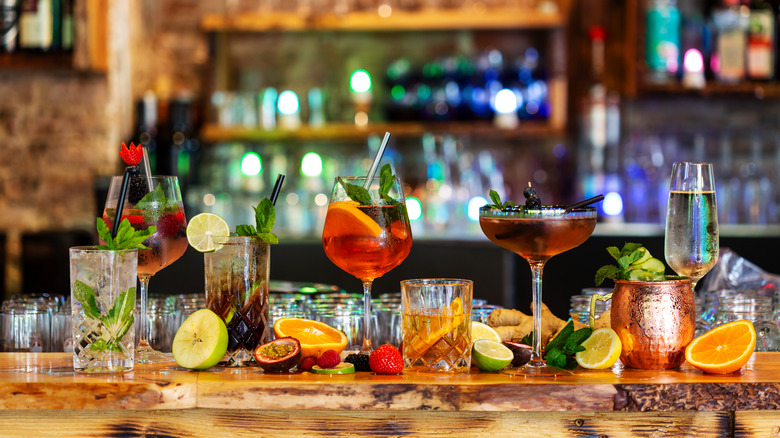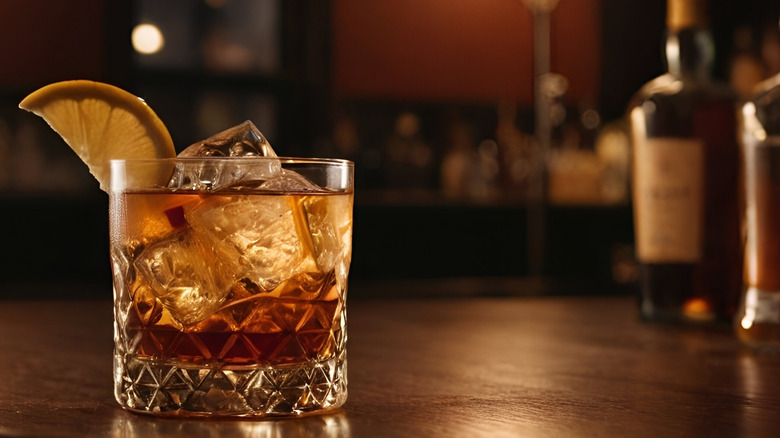When Making Cocktails, There's A Good Reason To Pour The Most Expensive Liquor Last
Building a great cocktail means combining key ingredients carefully, and the order you pour them in can matter, especially for your budget. Among the many cocktail tips that can save you money, some bartenders and home-tenders add the most expensive part (typically the liquor) toward the end of a beverage's construction.
The thinking here is based purely on expense, as mistakes can pop up when you're mixing drinks. It's fairly common to measure something wrong or accidentally spill an ingredient, and if a slip-up happens with the less costly parts of a drink (like juices, simple syrups, or bitters) poured first, you only need to dump out those cheaper ingredients. The more expensive liquor hasn't been added yet, which keeps you from wasting good alcohol.
The price gap between spirits and mixers is often quite large. What makes liquor cost more includes the quality, the distillation and aging processes, how rare it is, the brand name, and its alcohol proof or content. Even if you're ordering a call drink or well cocktail, adding pricey liquor last is carefully measured to minimize the financial hit. While the flavor of the drink doesn't usually change with the order of your mixing, for most regular preparations (other than layered cocktails), the pouring order affects potential waste, not the flavor itself.
Cocktails you should be focusing on when using this rule
The idea of adding the priciest ingredient last applies best to cocktails where the base spirit costs quite a bit more than everything else going into the drink. A premium margarita shows this perfectly. If you're using a high-quality tequila, which will undoubtedly be more expensive than the fresh lime juice, triple sec, and agave put together, pouring the tequila last protects your investment.
If you make a mistake measuring the juice or the triple sec, the loss stays limited to those cheaper items. Adding the tequila just before the ice goes in means it's only committed once the cheaper parts are measured correctly and ready to go. Of course, if you're using Cointreau and a cheap tequila, you can pour the Cointreau last if it turns out to be more expensive than the tequila you're using. Measurement matter here, since 2 ounces of cheap tequila would need to be less expensive than, say, ¾ ounce of Cointreau. Time to brush up on your math.
A classic Whiskey Sour made with a top-shelf bourbon or whiskey (there's a big difference) is another situation where this general rule is useful. The whiskey is the most expensive ingredient compared to lemon juice and simple syrup, so adding the whiskey after these ingredients are added will ensure that, if the ratio is off, only those cheaper parts get tossed. The tactic works best when there are a lot of ingredients being used, but you could still apply this concept to something like an Old Fashioned if you aren't feeling confident.

